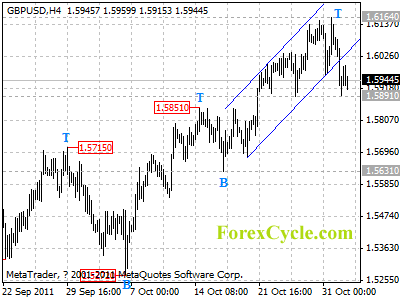Are We Using Less Energy Than We Did 40 Years Ago?
by David Fessler, Investment U Senior Analyst
Wednesday, November 2, 2011
Those of you in your fifties (my decade) or older remember the Arab oil embargo of 1973 to 1974. That’s when tensions in the Middle East caused the price of crude oil to quadruple from $3.00 per barrel to $12 per barrel in a matter of months.
The gas lines at my local filling station stretched down the street and out of sight. In the last week of February 1974, the American Automobile Association reported 20 percent of American service stations had no gasoline at all.
As a result of the OPEC embargo, the government scrambled to save energy. Gasoline and diesel rationing was instituted. A national speed limit of 55 mph was enforced. The United States began development of the Strategic Petroleum Reserve. The Department of Energy was created, and year-round daylight savings time was put in place.
Even NASCAR got into the act, reducing all race distances by 10 percent. In 1974, both the 12 Hours of Sebring and the 24 Hours of Daytona were cancelled.
Cars were redesigned. Small, front-wheel drive models began to replace the big front-engine, rear-wheel drive models. Interest in renewable energy skyrocketed, spurring research in wind and solar power. (Sound familiar?)
Now let’s fast-forward nearly 40 years to today. How does our energy use on a per capita basis compare to that of the post-oil embargo era?
You might be surprised to learn it hasn’t changed one bit. As you can see from the graph below, Americans use about the same amount of energy on a per capita basis as they did 40 years ago.

There are several reasons for this. Part of the reason was a geographical shift in population. Taking a look at the graph below from the U.S. Census, and you can see that the mean “center” for the entire population of the country has slowly but surely moved towards warmer and drier climates. This partially offset the building boom of larger and larger homes, that by their very nature require more energy to cool, heat and light.

But the big reason had nothing to do with people moving around. Once again, increased energy efficiency has played a crucial role in our overall energy use remaining the same.
When the National Appliance Energy Conservation Act of 1987 was passed, it was a whole new ballgame for appliance manufacturers.
Makers of household appliances such as water heaters, furnaces, heat pumps, air conditioners, refrigerators and freezers all had to meet tough new standards for energy efficiency.
Go into any appliances store now and the ubiquitous yellow label denotes that particular model’s power consumption and expected yearly costs. It makes it easy for consumers to do an apples-to-apples comparison.
Light bulbs are moving from incandescents to CFLs and are well on the way to eventually being all LEDs. It will take a while, but we’ll see a lot of savings there, as well. Cree, Inc. (Nasdaq: CREE) is a big maker of LEDs, and should eventually benefit as the switchover gathers steam.
Energy management systems from the likes of Honeywell International, Inc. (NYSE: HON), and Johnson Controls, Inc. (NYSE: JCI) will continue to ensure commercial customers keep their energy costs as low as they possibly can, without relying on individuals to turn off the lights.
I’d avoid appliance makers at the moment. Whirlpool Corporation (NYSE: WHR) just reported less-than-stellar earnings, and guided lower. Consumers aren’t buying new big-ticket appliances like they were a few years ago.
The bottom line is that energy efficiency is doing more to save our energy skins than a bunch of solar panels or wind generators. We’ll see even more of that in the months and years ahead.
Good investing,
David Fessler
Article by Investment U




